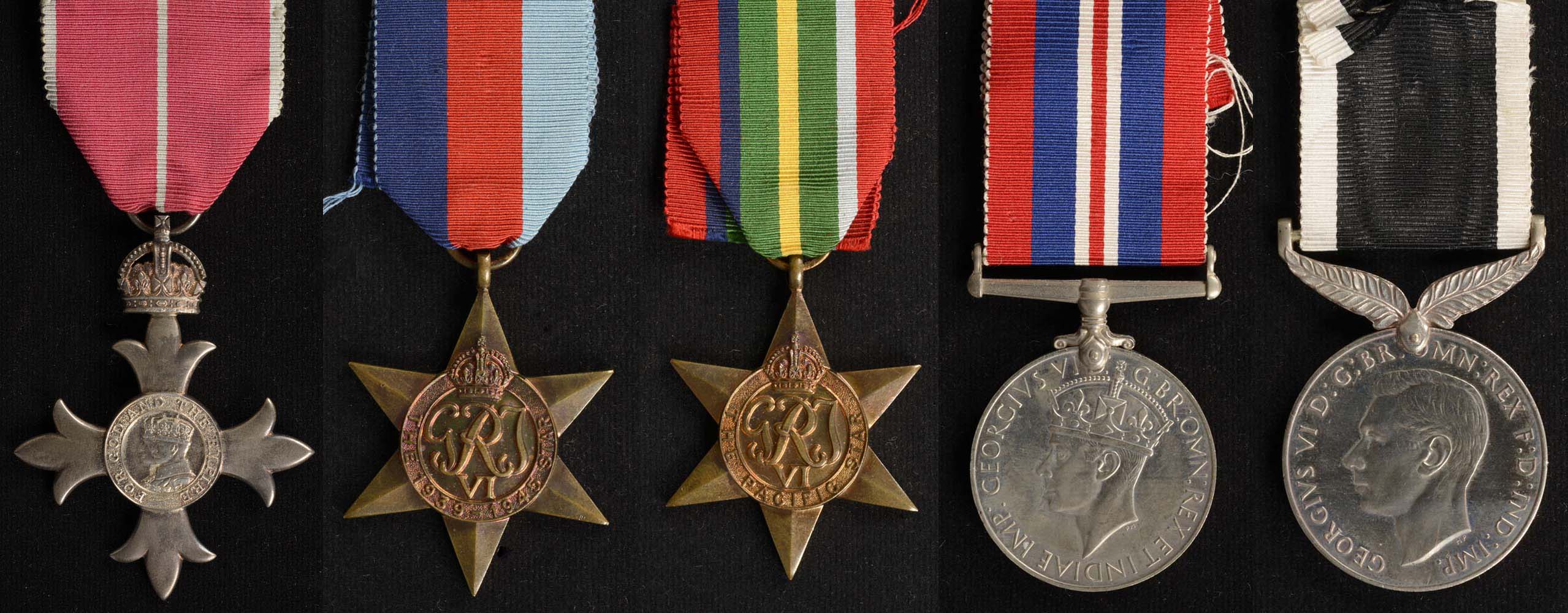

Display No. 8A
DIXON, Herbert Charles
Herbert Dixon joined the New Zealand Division of the Royal Naval Volunteer Reserve (RNVR NZ) in April 1941 during the Second World War. He volunteered under ‘Scheme Y’ which recruited experienced yachtsmen to man small craft in Hong Kong and Singapore.
In late 1941 Dixon was on assignment in Hong Kong as director of radio production for the Royal Navy keeping radio equipment operational in ships and shore establishments. In December of that year Japanese forces attacked and captured Hong Kong. Dixon was reported missing until June 1942 having been interned at the Shamsuipo prisoner of war (POW) camp. Dixon spent the remainder of the war moving between several POW camps around Hong Kong. Using his experience as a radio technician, Dixon built and operated clandestine radios to provide news of the outside world to his fellow prisoners. He was eventually found out and was then arrested, tortured, and jailed by his captors. On 20 September 1945 he was liberated from prison when British forces regained control of Hong Kong.
Dixon departed Hong Kong onboard HM Hospital Ship Oxfordshire and then spent time recovering from his various afflictions in a Royal Navy Hospital in Sydney before returning to New Zealand. He was created a Member of the Most Excellent Order of the British Empire (MBE) for ‘outstanding services during the defence of Hong Kong and while a Prisoner of War in enemy hands’.
Awarded medal(s)
Medal Description [Left to Right]:
Member of the Most Excellent Order of the British Empire (MBE)

Established by King George V in 1917 for services to the British Empire. The Order has five classes: Knight and Dame Grand Cross (GBE), Knight Commander and Dame Commander (KBE / DBE), Commander (CBE), Officer (OBE) and Member (MBE). The MBE badge is in frosted silver. In December 1918, the Order was split into two divisions: a Civil Division for civilian recipients; and a Military Division for awards to commissioned officers and warrant officers for distinguished service in action. The insignia of the Civil and Military Divisions is distinguished only by the ribbon, the military award having a narrow central stripe. Prior to the introduction of the New Zealand Order of Merit in 1996, the Order of the British Empire was the most common honour awarded to New Zealand military personnel.
The 1939-1945 Star
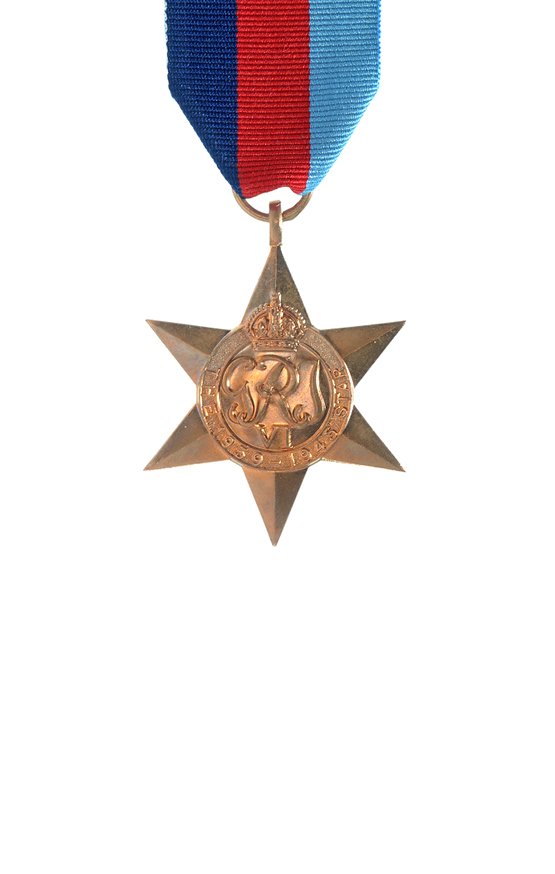
The 1939-45 Star is the first in a series of eight campaign stars instituted in 1945 to recognise service in World War Two. The ribbon has three equal vertical stripes of dark blue, red and light blue. The dark blue stripe symbolises the service of the Navy and the Merchant Navy, the red stripe symbolises the service of the Army, and the light blue stripe symbolises the service of the Air Force. The equal width bands represent the equal contributions of the three service arms towards victory. The ribbon was devised by King George VI. Two clasps could be awarded with this medal: ‘Battle of Britain’ and ‘Bomber Command’. Only aircrew would qualify for these clasps although a small number of Fleet Air Arm naval pilots flew for the air force and would be eligible for the ‘Battle of Britain’ clasp.
The Pacific Star
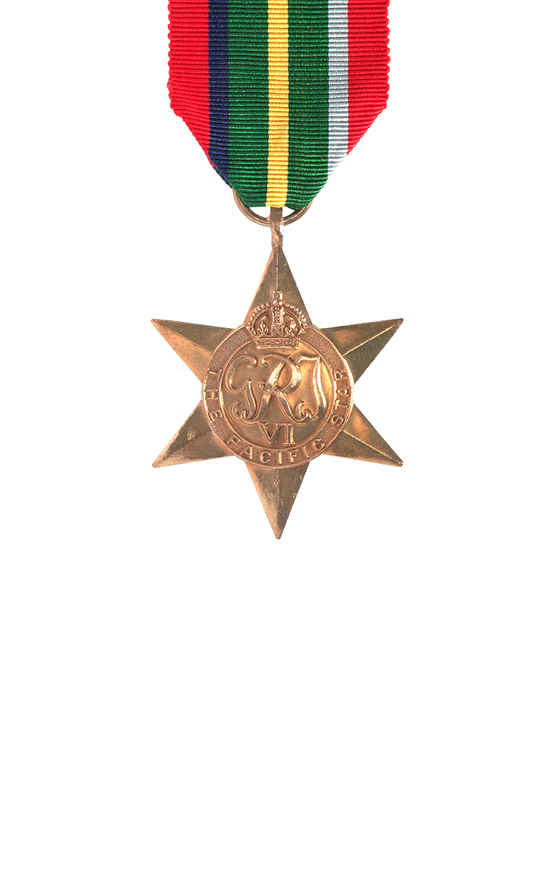
The Pacific Star was awarded in the Second World War for operational service in the Pacific between 8 December 1941 and 2 September 1945. This medal was also awarded for certain specified service in China, Hong Kong, Malaya and Sumatra: between 8 December 1941 and 25 December 1941 (for Hong Kong); between 8 December 1941 and 15 February 1942 (for China and Malaya); and between 8 December 1941 and 23 March 1942 (for Sumatra). The centre of the ribbon is dark green (symbolising the jungle) with a central yellow stripe (symbolising the beaches). On the outer edges are wide stripes of red (representing the Army), with narrow stripes of dark blue and light blue (representing the Navy and Air Force) between the stripes of dark green and red. A ‘Burma’ clasp could be awarded with this medal. Personnel qualifying for both the Pacific and Burma Stars were awarded the first star but only a clasp in respect of the second.
The War Medal 1939-1945
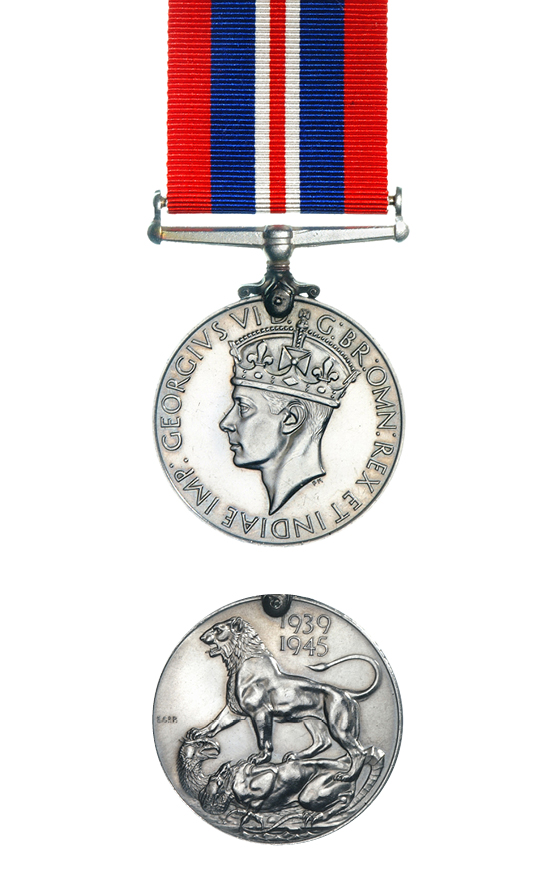
The War Medal 1939-45 was awarded across the British Commonwealth to all full-time members of the Armed Forces in the Second World War for 28 days service between 3 September 1939 and 2 September 1945, irrespective of where they were serving. The ribbon is the red, white, and blue of the (British) Union Flag. There is a narrow central red stripe with a narrow white stripe on either side. There are broad red stripes at either edge, the two intervening stripes being blue.
A bronze oak leaf on the medal ribbon denotes that the recipient was Mentioned in Despatches. To be Mentioned in Despatches a member of the armed forces had their name mentioned in an official report, written by a superior officer, and sent to a higher command. The report would describe the individual’s gallant or meritorious action in the face of the enemy.
The New Zealand War Service Medal
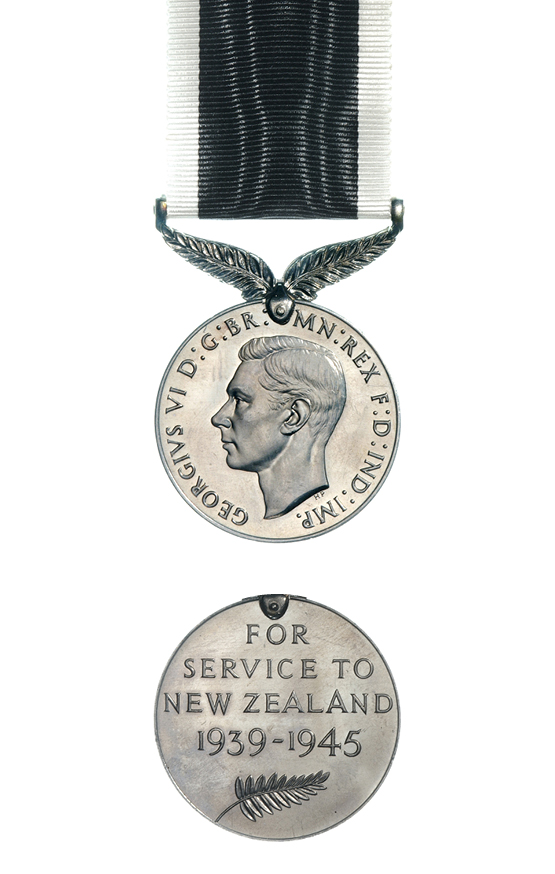
The New Zealand War Service Medal was awarded for 28 days’ full time service or six months’ part time service in the Second World War in any of the New Zealand Armed Forces including the Reserves, Naval Auxiliary Patrol Service, or Home Guard, between 3 September 1939 and 2 September 1945.

